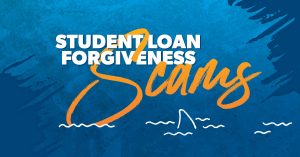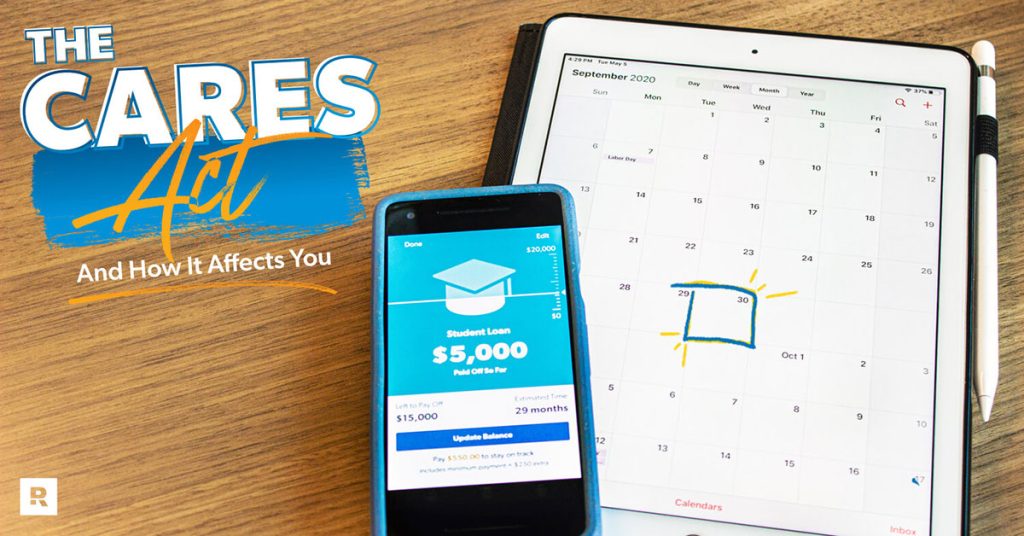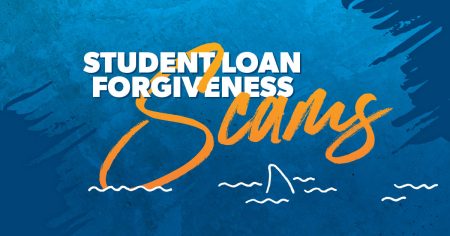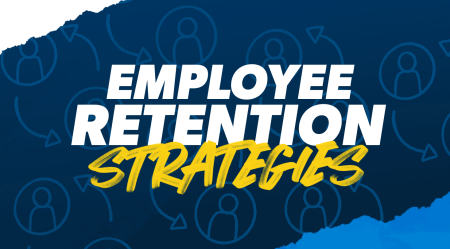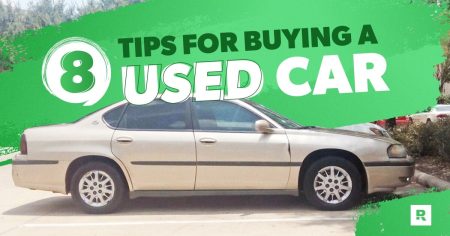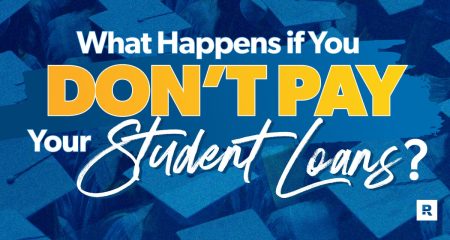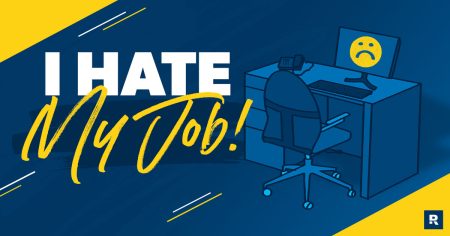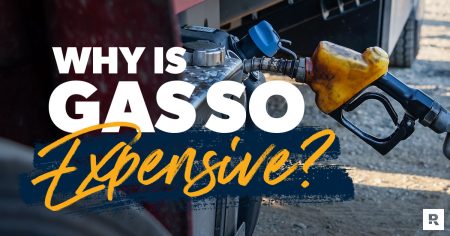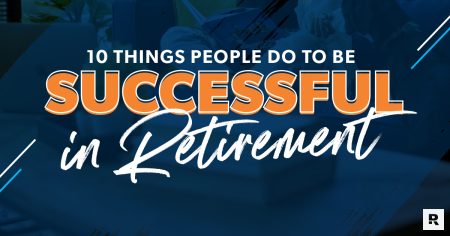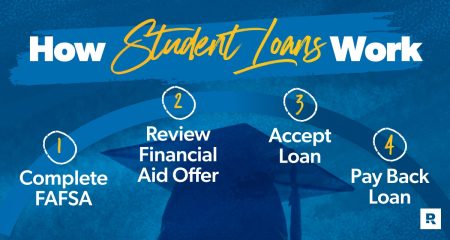Update as of June 2023: Federal student loan payments will resume October 2023—with interest starting back September 1, 2023.
Let’s be real: It’s been a rough few years. Maybe you were hit hard financially, and it’s been a struggle to keep food on the table, let alone worry about your student loans.
That’s where the CARES Act comes in. But there’s a lot more to it than not having to make your student loan payments. Here’s what you need to know about the CARES Act and how it affects you and your student loans.
What Is the CARES Act?
As soon as everything began shutting down in an effort to slow the spread of COVID-19, the economy started to take a big hit. So, President Trump signed the Coronavirus Aid, Relief, and Economic Security Act (aka the CARES Act) in March 2020 as a way to help keep Americans and businesses afloat.1
You know those stimulus checks that hit your bank account? Yeah, that’s part of the CARES Act. Under the act, the government gave out $2.2 trillion to help ease some of the financial loss due to the coronavirus.2 And as the pandemic lingered on, more stimulus checks were handed out. Most of the money went toward individual American taxpayers, unemployment funds, small business loans, medical equipment for hospitals and local government.
But the CARES Act also came with some changes in favor of borrowers, specifically those with student loans.
What Does the CARES Act Say About Student Loans?
Believe it or not, there are about 43 million borrowers who, put together, owe almost $1.6 trillion in federal student loan debt.3,4 Wowza! Add in all the ups and downs with the pandemic, global unrest and inflation that have happened since March 2020, and you’ve got a recipe for money stress—even for people who considered themselves financially okay before.
So, in order to help people through this time, payments for federally owned student loans have been temporarily suspended under the CARES Act until January 1, 2023.
What does that mean? Well, normally, you would have to prove you can’t make payments with your current income in order to get student loan forbearance or deferment. (Forbearance and deferment are just fancy words to describe putting your payments on hold. The difference is that interest continues to grow with forbearance but may or may not with deferment.)
But under the CARES Act, all federal student loans have been automatically placed in forbearance. So, you won’t be charged anything on your student loans until January 2023, not even interest—but you’re still able to keep paying on them if you’re able.
That’s not all, though. Under the CARES Act, there’s currently a 0% interest rate for all federal student loans. So, any payments you make toward those loans right now will go straight to the principal (the original amount you borrowed), and your loan won’t grow in interest. That’s a huge opportunity to make more progress paying them off!
Which loans qualify?
Federal student loans that are owned by the U.S. Department of Education are covered under the CARES Act. This includes Direct Stafford Loans, Direct PLUS Loans for parents and graduate students, and Direct Consolidation Loans. It also covers two other kinds of student loans, but only when they’re not owned by commercial lenders: Federal Perkins Loans and Federal Family Education Loans (FFEL).
Any private student loans or loans that aren’t federally owned are not covered under the act. So, sorry, but Sallie Mae is still going to expect her monthly payment.
If you’re not sure who owns your student loans, you can check here. If you see ED next to the loan, that means it’s owned by the Education Department and is covered under the CARES Act.
How long will it last?
It’s been over two and a half years since the CARES Act was first passed, and student loan relief has continued. But as of right now, the pause will end on December 31, 2022. That means once the new year hits, you’ll be expected to make payments again on any remaining federal student loans you have.
Ready to get rid of your student loans once and for all? Get our guide.
Yeah, we know the CARES Act has been extended several times. But according to President Biden, this really is supposed to be the last extension—so you need to start preparing now.
Will my payments be forgiven during this time?
Let’s be clear: The CARES Act is not forgiving your student loans—it just lets you delay your payments. And Biden’s new forgiveness plan is a whole different deal—one that you have to qualify and apply for (though it isn’t even a sure thing yet).
Also, if you’re applying for the Public Service Loan Forgiveness (PSLF) Program, this suspension won’t affect your eligibility as long as you’ve continued to work for an approved employer. But listen, you’re better off taking control of your own financial future instead of waiting on the government to save you.
How Does the CARES Act Affect My Credit?
If you choose not to pay your federal student loans during this time, it won’t affect your credit. Your student loans will still show up on your credit report, but as long as you were in good standing before the CARES Act, this pause won’t hurt your credit score.
Also, if you’ve defaulted on your federal student loans, Biden announced a “fresh start” initiative that lets borrowers start the repayment process back in good standing.5 We don’t know all the details yet and what you’ll have to do to be considered caught up, but it should be explained before payments start back in January.
And because student loan collections are on pause right now, that means the government can’t take money out of your paycheck, tax return or Social Security to make sure you pay. Yeah, it may sound like a free pass, but this is the best time to make progress on your loans if you can. And if you’re really having trouble paying your bills, a financial coach can help get you back on your feet.
But global crisis or not, avoid getting sucked into worshipping at the altar of the almighty FICO. Instead, focus on taking care of you and your family and getting rid of your debt for good.
Should I Keep Paying My Student Loans?
Here’s what to do if you’re in a crisis:
If you’re in the middle of a big life event (like losing your job, expecting a baby, or having an immediate family member in the hospital), go ahead and pause your debt snowball. Notice we said pause and not stop—you’ll want to pick the momentum back up as soon as things become stable again.
In the meantime, make sure you cover your Four Walls: food, utilities, shelter and transportation. And stockpile as much cash as possible to help you weather the storm. Remember, this is only for a little while. So, stay calm and stick to the plan!
Here’s what to do if your income is stable:
If you’ve got a stable income right now, then yes—keep making student loan payments and plowing through the Baby Steps. Even though you don’t have to worry about making a minimum payment for the next several months, the more you throw at your student loans now, the sooner you’ll be out of debt. In fact, now’s a great time to pay as much as you can because it all goes straight to the principal!
Waiting until January (when the interest rate kicks back up) will only extend the length of your loan and keep you in debt longer. Plug your payments into the student loan payoff calculator with 0% interest and see how fast you can pay them off right now!
Keep in mind that if you’ve been relying on automatic withdrawal to pay your federal student loans and you still want to pay them during this time, you’ll have to either manually send in a check or talk to the lender about ways to pay electronically. You’ll need to do this each time you want to pay.
Moral of the story: Don’t stop your debt snowball if you can help it! Even though a lot of things have changed because of this pandemic, you don’t want to lose sight of the big picture—being debt-free!
“The fact that they’ve given you an interest break only accelerates how fast you pay it off. It does not mean you stop paying on them.” — Dave Ramsey
Does 0% interest affect the order of my debt snowball?
Under normal circumstances, we teach people to follow the debt snowball method. That’s when you list all your debts from smallest to largest and pay them off in that order—regardless of interest rate. This gives you small wins and helps you tackle your debt with gazelle intensity.
But in this case, which is definitely a rare exception, you have a couple options: You can keep making payments on your federal student loans so the 0% interest works in your favor. Or you can pause those payments and use the extra cash to really hit the smallest debt in your snowball. If you do this, though, don’t forget to put those student loans back in your debt snowball come January.
And what about those private student loans that aren’t covered by the CARES Act? Try talking with your lender to see if there’s any way they can help you during this time, especially if you’re in a tight spot financially. Or see if refinancing your student loans is the best option for you.
Whatever you decide to do, remember to think ahead and not let short-term fear mess up your long-term plan. You got this!
Can I Get a Student Loan Refund Check?
Yes, you can—but let us explain. In an effort to help those in extreme financial strain, the government has directed federal loan servicers to allow borrowers who need extra money to collect a refund on any payments to qualifying student loans they made on or after March 13, 2020.
But if you still owe on your student loans, getting a refund check will only set you back. The only instance we might suggest it is if you’re struggling to make ends meet and that refund check will help you feed your family. But if things are pretty normal with your budget right now, you’d be robbing from your future by asking for a refund when you still have debt to pay off.
Now, some people who have already paid off their student loans during the pandemic are using the refund to get in on Biden’s student loan forgiveness plan. But this isn’t the right choice for everyone, and the process is more complicated than just getting a check.
If you do need to get a refund on student loan payments, here’s how to do it:
- Make a note of how many payments on eligible student loans you’ve made since March 13, 2020 (nothing from before that date is eligible for a refund).
- Note the date and amount of each payment as well.
- Be aware that if you made payments during the deferment period to more than one student loan servicer, you’ll need to reach out to each one individually for refunds.
- Each servicer’s website includes a COVID-19 page with their own steps for how to collect that refund. In most cases, this will just mean a phone call to get it done.
- Now’s the time to specify which months you’d like to have payments refunded for—and don’t forget to ask them how long you should expect to wait on the refund.
- Refunds should go to the same bank account you used for the original payment or payments.
How to Get Rid of Student Loan Debt
It doesn’t take a crisis to make you realize student loan debt is holding you back from the life you want. If you’re tired of paying for the past, you can get out of debt. Instead of spending the next decade paying for a degree you got years ago, take control of your student loans—now!
Learn how to say goodbye to your student loan payment with our new course—The Ultimate Guide to Getting Rid of Student Loan Debt. From forgiveness to payoff, explore your options and get the plan to ditch your student loans for good!
Read the full article here
